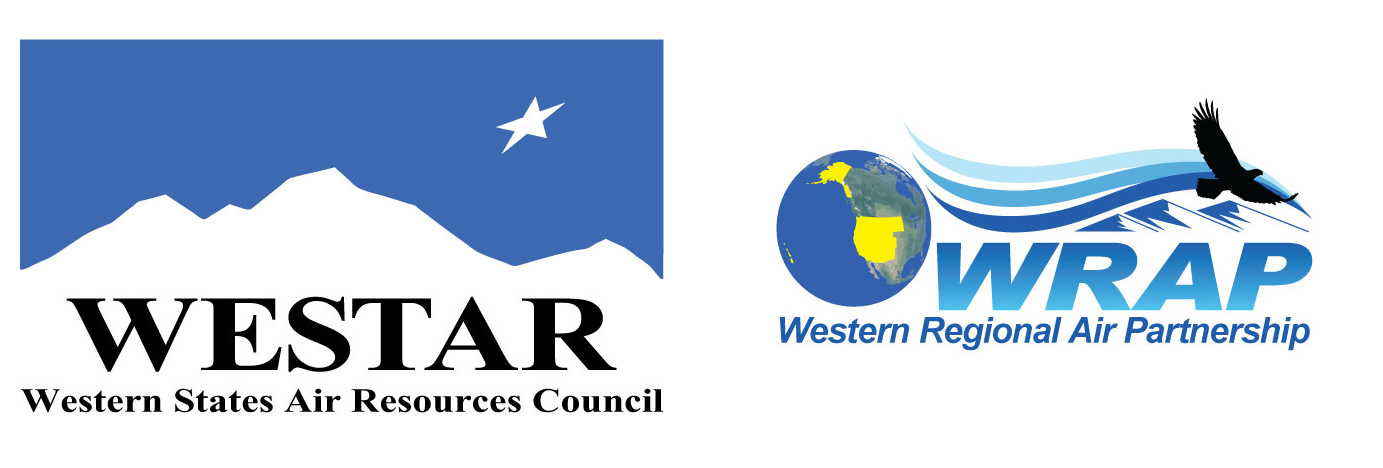Regional Emissions Data and Analyses
Overview
The Western Regional Air Partnership (WRAP) will provide emissions data tracking and related technical analyses to assist states, tribes, federal land managers, local air agencies and the US EPA with understanding current and evolving regional air quality issues in the West.
The regional effort on emissions includes work to fully characterize sources important in the West, as well as those sources contributing to Western air quality issues from outside the WRAP region:
- Collection, analysis, and development of western emissions data through the Intermountain West Data Warehouse (IWDW) – Western Air Quality Study (WAQS);;
- Tracking of source processes and activity data, as well as analysis of the associated emissions from fire and biomass burning through the FETS, and the impacts of fire and smoke on ozone and particulate matter at WRAPTools;
- Coordination and harmonization with the EPA National Emissions Inventory;
- Development of data for emissions sources from all sectors, both domestic and international for air quality planning in the West;
- Analyses of baseline, trends, and projection data;
- Evaluation of control technologies and strategies; and
- Identifying the effects of climate change on emissions.
To accomplish this, WRAP develops, maintains, and shares databases, supports technical analyses, and provides access to data and results from various information sources to produce consistent, comparable, and complete results for use by individual WRAP member jurisdictions and agencies.
2022 Emissions Modeling Platform
Emissions Modeling Platform Kick-off: The collaborative process for creating a new emissions inventory base year for a modeling platform kicked off on August 2, 2023. View a recording of the kickoff call here.
Resources
Emissions Inventories
EGU Emissions Analysis Project
The Center for the New Energy Economy (CNEE) at Colorado State University will conduct an analysis of current and future air emissions from fossil-fueled electricity generating units (EGUs) in 13-Western states for the Western States Air Resources Council (WESTAR) and Western Regional Air Partnership (WRAP). WESTAR and WRAP representatives have participated in discussions with WEST Associates, a group comprised of major Western electric utilities, to develop parameters for this study, including information needed for Western regional air quality analyses and planning under the federal Clean Air Act.
Developing a comprehensive and up-to-date data set for EGU emissions has emerged as a top priority among Western state and utility officials. The information developed through this project will be used in regional analysis affecting all Western states and utilities as part of the ongoing implementation of the Regional Haze Rule and for ozone analysis and planning.
Phase I of the project which has two major objectives and deliverables:
- A comprehensive database of information on the fleet of fossil-fired EGUs in 13-Western states (circa 2014-2017) that contains information on the plants operating characteristics and emissions; and
- A projection of future plant utilization and emissions based on expected plant closures, re-powering plans, and additional controls required under a “rules on the books” scenario that includes any controls required by permit or consent decree during the period 2014 (base year) to 2028 (target year).
June 14, 2019
Final Report (PDF)
- File 1 – Net Generation Data
- File 2 – 1998-2018 CAMD Data
- File 3 – 2018 Charts
- File 4 – Western Coal Units
- File 5 – 2028 Coal Scenarios
- File 6 – 2018 and 2028 Gas Units
- File 7 – Non-CAMD Units
- File 8 – 2018 and 2028 by state
- File 9 – Scatter Plots
- File 10 – Gas 2014-18
Drill Rig 1-hour NO2 Collaborative Study
The purpose of this Study was to collect ambient measurements adjacent to operating drilling rigs to evaluate actual 1-hour NO2 impacts from drilling operations. In addition, sufficient data would be collected regarding emissions from drilling operations that could be used to verify NO2 air quality models. The Study was designed to focus on short term episodes as opposed to a long term monitoring program. Long term monitoring is not practical because of the short duration that a drilling rig is at a single location (less than 30 days).
The data were collected during two field studies in the fall of 2014. One field study was conducted at two drill rigs near Platteville, CO (in the Denver-Julesburg Basin), and the other was conducted on the north slope of Alaska. Two work groups were formed to review and analyze the study data. The Alaska Work Group is to review and analyze the Alaska data, while the Colorado Work Group has reviewed and analyzed the Colorado data and their Technical Support Document is linked below.
- Notes of February 20, 2018 Study Management Team Call (PDF)
- Notes of March 22, 2018 Study Management Team Call (PDF)
- Notes of February 6, 2019 Study Management Team Call (PDF)
- 2014 Colorado Oil and Gas Drill Rig Field Study Model Evaluation Database – Technical Support Document – August 2020
- EPA SCRAM link for AERMOD Evaluation Databases Denver-Julesburg Study (ZIP) (August 18, 2020)
Fire Emissions and Analysis Projects
- Demonstration presentation:WRAPFireTools analysis and planning tools for Ozone impacts –
- Fire/Ozone project (Deterministic & Empirical Assessment of Smoke’s Contribution to Ozone)
- Fire/PM project (Prescribed and Other Fire Emissions: Particulate Matter Deterministic & Empirical Tagging & Assessment of Impacts on Levels)
Emission Inventory Presentations
- Oil and Gas Emission Inventories and Applications for Estimating Impacts to Health and Welfare, John Grant and Tom Moore, Health Effects Institute Workshop on Planning Research to Understand Population-Level Exposures Associated with Onshore Development of Oil and Natural Gas from Unconventional Resources, September 13, 2018, Austin, TX

Contact Us
Western States Air Resources Council
(WESTAR)
1925 Aspen Dr.
Suite 600A
Santa Fe, NM 87505
Phone: (505) 954-1160
Fax: (505) 954-1216

